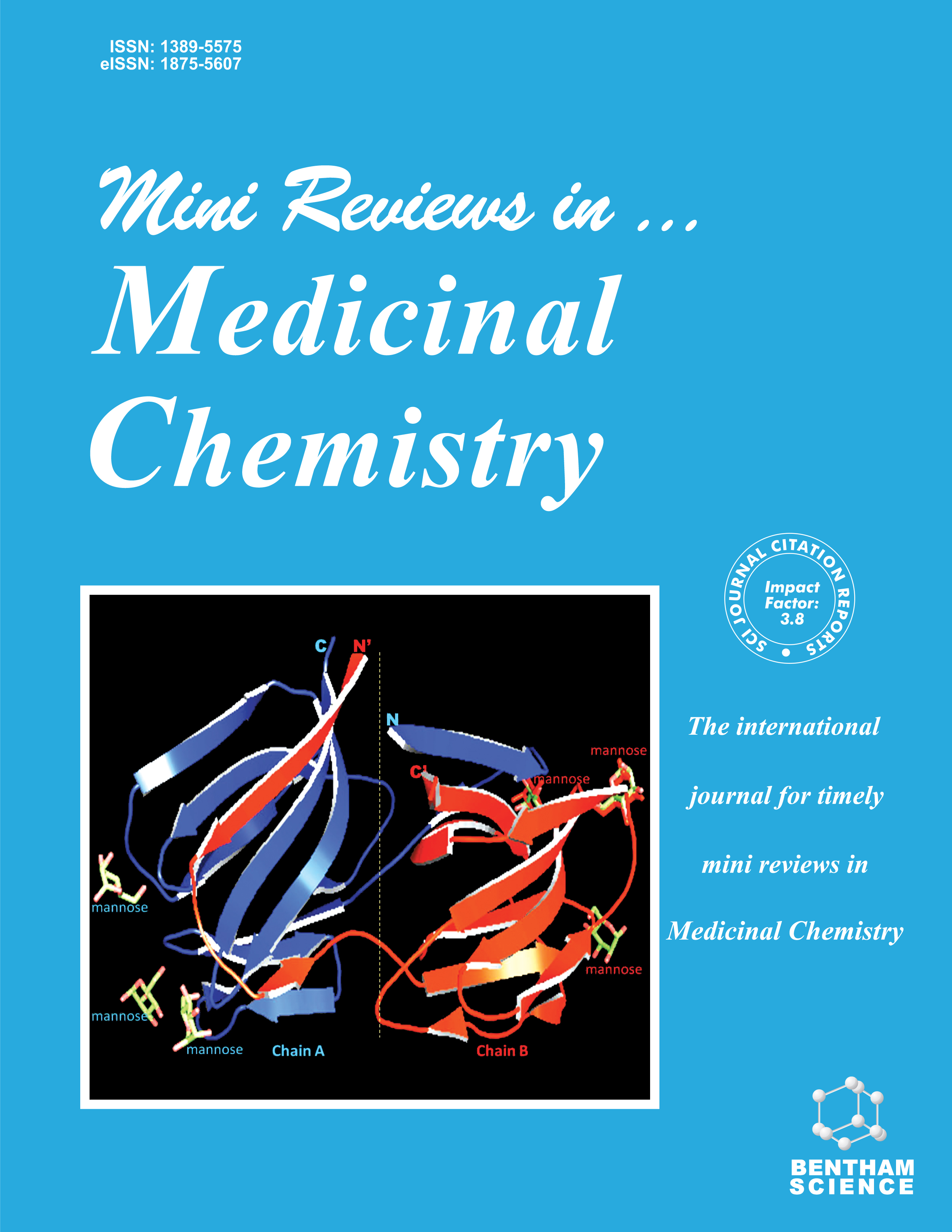- Home
- A-Z Publications
- Mini Reviews in Medicinal Chemistry
- Previous Issues
- Volume 25, Issue 4, 2025
Mini Reviews in Medicinal Chemistry - Volume 25, Issue 4, 2025
Volume 25, Issue 4, 2025
-
-
A Review on Recent Trends in Photo-Drug Efficiency of Advanced Biomaterials in Photodynamic Therapy of Cancer
More LessAuthors: Nawab Ali, Liaqat Rasheed, Wajid Rehman, Muhammad Naseer, Momin Khan, Safia Hassan and Amina ZulfiqarPhotodynamic Therapy (PDT) has emerged as a highly efficient and non-invasive cancer treatment, which is crucial considering the significant global mortality rates associated with cancer. The effectiveness of PDT primarily relies on the quality of the photosensitizers employed. When exposed to appropriate light irradiation, these photosensitizers absorb energy and transition to an excited state, eventually transferring Read More
-
-
-
Copper Dyshomeostasis and Diabetic Complications: Chelation Strategies for Management
More LessCuproptosis, an emerging concept in the field of diabetes research, presents a novel and promising perspective for the effective management of diabetes mellitus and its associated complications. Diabetes, characterized by chronic hyperglycemia, poses a substantial global health burden, with an increasing prevalence worldwide. Despite significant progress in our understanding of this complex metabolic disorder, optimal thera Read More
-
-
-
Targeting Bcl-2 with Indole Scaffolds: Emerging Drug Design Strategies for Cancer Treatment
More LessAuthors: Pouria Zarrin and Zeynep Ates-AlagozThe B-cell lymphoma-2 (Bcl-2) protein family plays a crucial role as a regulator in the process of apoptosis. There is a substantial body of evidence indicating that the upregulation of anti-apoptotic Bcl-2 proteins is prevalent in several cancer cell lines and original tumour tissue samples. This phenomenon plays a crucial role in enabling tumour cells to avoid apoptosis, hence facilitating the development of resistant cells against Read More
-
-
-
Energy Metabolism Behavior and Response to Microenvironmental Factors of the Experimental Cancer Cell Models Differ from that of Actual Human Tumors
More LessAnalysis of the biochemical differences in the energy metabolism among bi-dimensional (2D) and tri-dimensional (3D) cultured cancer cell models and actual human tumors was undertaken. In 2D cancer cells, the oxidative phosphorylation (OxPhos) fluxes range is 2.5-19 nmol O2/min/mg cellular protein. Hypoxia drastically decreased OxPhos flux by 2-3 times in 2D models, similar to what occurs in mature multicellular tum Read More
-
Volumes & issues
-
Volume 25 (2025)
-
Volume 24 (2024)
-
Volume 23 (2023)
-
Volume 22 (2022)
-
Volume 21 (2021)
-
Volume 20 (2020)
-
Volume 19 (2019)
-
Volume 18 (2018)
-
Volume 17 (2017)
-
Volume 16 (2016)
-
Volume 15 (2015)
-
Volume 14 (2014)
-
Volume 13 (2013)
-
Volume 12 (2012)
-
Volume 11 (2011)
-
Volume 10 (2010)
-
Volume 9 (2009)
-
Volume 8 (2008)
-
Volume 7 (2007)
-
Volume 6 (2006)
-
Volume 5 (2005)
-
Volume 4 (2004)
-
Volume 3 (2003)
-
Volume 2 (2002)
-
Volume 1 (2001)
Most Read This Month
Article
content/journals/mrmc
Journal
10
5
false
en


